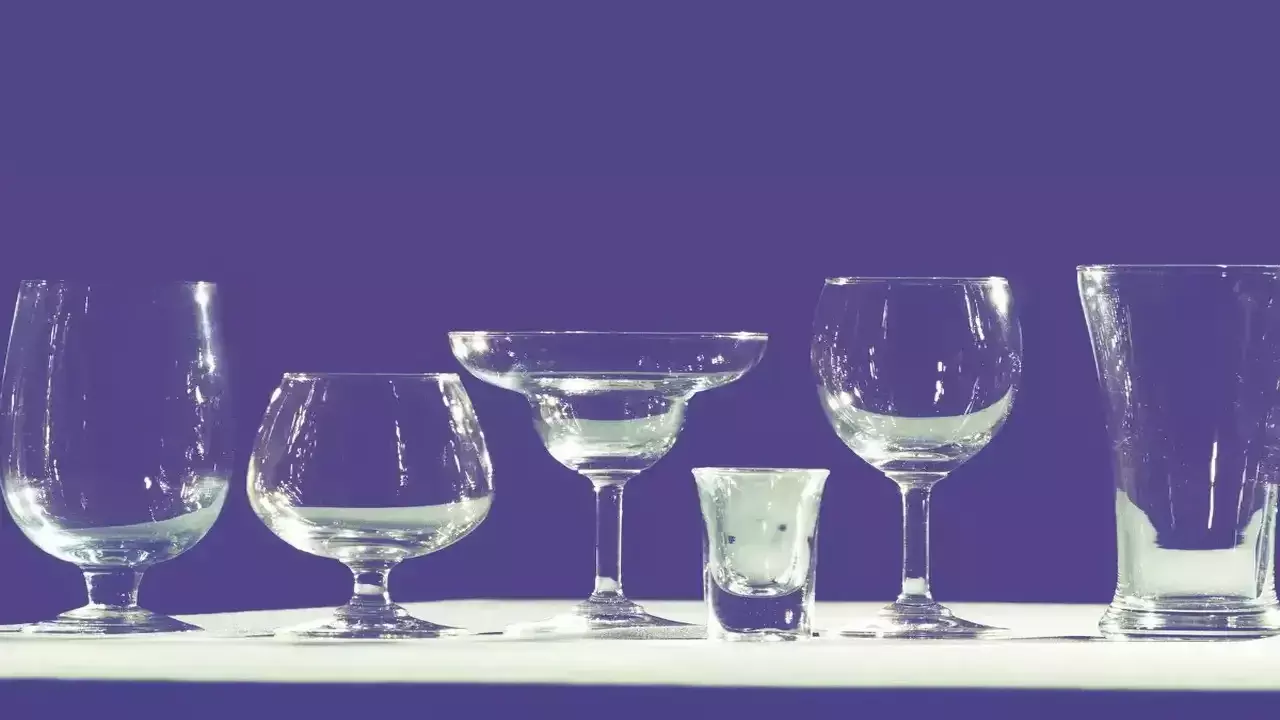TRENDING TAGS :
The Shimmering World of Drinking Glasses: A Fascinating Tale of History, Innovation, and Health
Discover the rich history, cultural significance, and health benefits of drinking glasses — from ancient glassware and royal gold goblets to copper, brass, clay, and wood vessels that reflect centuries of innovation and tradition.
Drinking Glasses (PC- Social Media)
Have you ever wondered how old the history of the glass you use every day for drinking water might be? Is it just an ordinary vessel, or is it a shining symbol of the evolution of human civilization? The world of drinking glasses—made of glass, gold, silver, brass, copper, clay, and even wood—is thousands of years old and immensely rich. More than just a part of our lifestyle, it holds within it layers of history, art, culture, and health wisdom. Let us embark on this fascinating journey to explore the diverse and deep-rooted history of drinking glasses.
The Glittering Origins of Glassware
Today, the world of crockery offers a wide variety of glasses suitable for both ordinary and elite users. But did you know that the earliest man-made glass artifacts date back to around 2500 BCE in ancient Egypt? Initially, Egyptians used opaque glass to make beads. Gradually, techniques to mold glass into vessels evolved. In the 15th century BCE, during the Bronze Age, Egyptians and Mesopotamians introduced cast glass techniques, molding glass into cups and goblets. During this time, bronze and gold cups also gained popularity.
In Greek and Roman civilizations, glass was used for mirrors, decorative items, and drinking vessels. Roman advancements led to the creation of lightweight and transparent glasses. In India, glass technology possibly began around 1730 BCE. During the Maurya and Gupta periods, glass objects became common for religious, cultural, and household uses. Countries like Belgium developed factories that produced high-quality and globally admired glassware. By the 19th century, decorative glassware was in high demand throughout Europe.
Archaeological Proof of Glassmaking: The Jalame Excavation
In the 1960s, archaeologists from the Corning Museum of Glass and the University of Missouri excavated an ancient glass workshop in Jalame, Israel, which was active between 350–400 CE. Excavated artifacts included raw glass chunks, furnace remains, glassblowing debris, and fragments of utility glassware. The exhibition allowed visitors to touch ancient glass, hear excavation sounds, and participate in discovery via digital games, bringing archaeological experiences to life for the public.
Diverse Shapes and Designs of Glasses
Over time, drinking glasses have evolved into a variety of shapes and styles:
Cylindrical Glasses
For everyday use
Wine Glasses
With long stems and bowl-shaped tops
Shot Glasses
For small doses
Goblets
Often ornate and used in religious or ceremonial contexts
Cut Glass
Heavy and engraved, seen as highly valuable
Regional influences are evident in designs like Rajasthani colored glass, Murano glass from Italy, and Meenakari metal glasses from Banaras, each bearing cultural uniqueness.
Gold and Silver Glasses: Symbols of Prestige, Power, and Wealth
In ancient civilizations like Egypt, Greece, Rome, Persia, and India, glasses made of gold and silver were reserved for royalty and the elite. These drinking vessels symbolized power and opulence. During the medieval period, kings, feudal lords, and church dignitaries used such glasses during ceremonies and rituals. These handcrafted items were often encrusted with precious stones.
In Mughal India, gold and silver vessels became part of the royal table. They featured intricate carvings and enamel work, evolving into artistic and decorative objects over time.
Traditional Glasses Made of Wood, Copper, Brass, and Clay
Apart from precious metals and glass, wooden glasses—made from naturally available resources—were widely used, especially among tribal and hill communities. Lightweight and eco-friendly, these are still used in certain indigenous areas. Copper and brass glasses were also commonly used. In Ayurveda, copper glasses are highly significant, while brass was a standard material for household utensils.
Clay glasses are still prevalent in Indian villages today in the form of kulhads. These are eco-friendly and believed to enhance the taste of beverages.
Health Benefits and Scientific Perspectives
Glass
Chemically inert, ensuring purity of drinks Reusable and environmentally friendly
Copper
According to Ayurveda, water stored in copper vessels (called Tamrajal) boosts immunity Beneficial for heart health, digestion, and skin
Silver
Has antibacterial properties Cooling effect and supports immune function
Brass
An alloy of copper and zinc In Ayurveda, brass vessels are esteemed for their health benefits
Health Benefits of Drinking from Brass Vessels
-
Alkaline Effect: Brass water balances body pH and aids in digestion and metabolism
-
Immunity Boosting: Copper and zinc both contribute to stronger immunity
-
Digestive Health: Stimulates appetite and relieves constipation and gas
-
Skin Protection: Antibacterial nature helps guard against skin diseases and infections
Clay
Naturally cools water and adds an earthy aroma Clay glasses and pots are considered safe and healthy for drinking
Wood
Glasses made from medicinal trees like neem, teak, khair, vijaysar, arjuna, and sal are: Naturally detoxifying and antibacterial Environmentally sustainable and Ayurvedically beneficial
A Journey That Reflects Heritage and Innovation
The wide variety of glass shapes, materials, and usage styles reflect the evolution of human civilization, technology, art, customs, and health traditions. From basic glass to royal gold and silver goblets, this journey tells a cultural and historical story—a narrative that, with every sip, carries the sweetness of our past and the prestige of our heritage.


